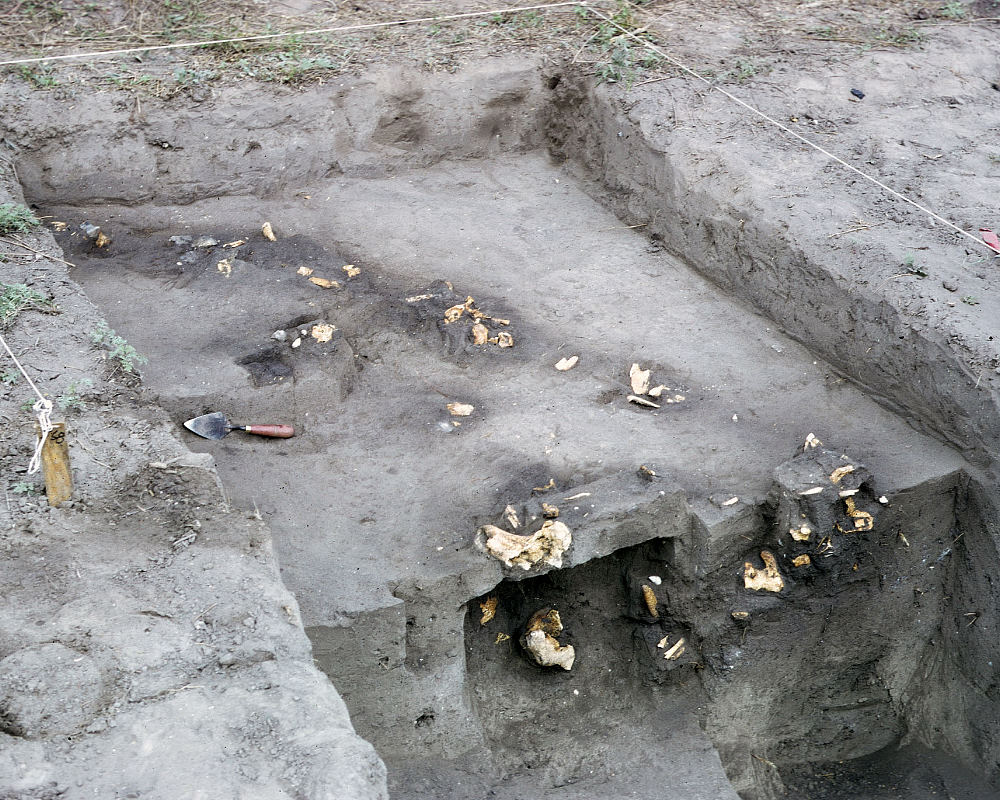The 1975 testing encountered this concentrated deposit of
butchered and broken animal bones, dubbed the "bone bed." The largest fragments are bison bones, but the bones of deer and smaller animals were also present. Unfortunately, when
archeologists returned to the spot in 1981 to further expose the area they encountered
a very large complex of leaf-cutter ants, perhaps drawn to the softened deposits
created by the back-filled test pits.
The bone bed probably represents a convenient
erosional gully where Late Prehistoric peoples disposed of bones and other debris.
Note the dark organic-stained fill of the apparent gully. Smaller, but similar
clusters of bone were documented elsewhere at the site in 1981. Photo by Tom Hester. |
